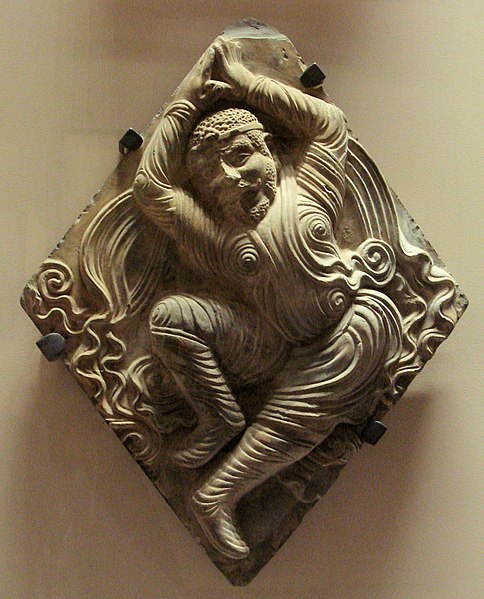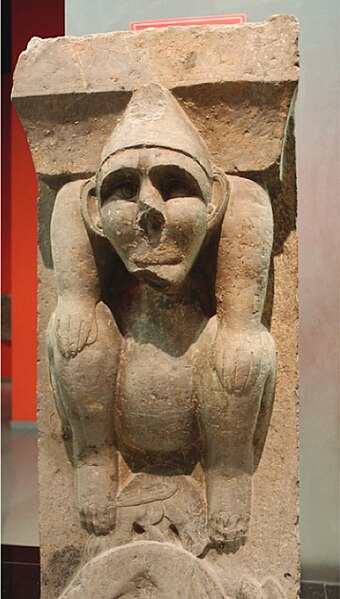Donghu was a tribal confederation of "Hu" (胡) nomadic people that was first recorded from the 7th century BCE and was taken over by the Xiongnu in 150 BCE. They lived in northern Hebei, southeastern Inner Mongolia and the western part of Liaoning, Jilin and Heilongjiang along the Yan Mountains and Greater Khingan Range.
The Donghu were located to the northeast of Qin China in the 3rd century BCE.
Horse bit and harness ornaments. Upper Xiajiadian culture. Inner Mongolia Museum
Burial at Zhoujiadi cemetery (with and without mussel mask), an ancestor of the Donghu clan, Upper Xiajiadian culture (1000-600 BCE).
Bronze Dagger with figurine, Upper Xiajiadian culture (1000-600 BCE). Inner Mongolia Museum.
Hu also Huren or Huzu, was a rather vague term to designate ancient barbarians, namely populations beyond the Central Plains, generally to the north and west of China. The Hu are usually horse or mounted nomads.
Sogdian Huteng dancer, Xiuding temple pagoda, Anyang, Henan, China, Tang dynasty, 7th century.
Image: Hu statue columns from Wu Baizhuang 吳白莊 Han period tomb in Linyi, Shandong
Image: Hu statue with lion column from Wu Baizhuang 吳白莊 Han period tomb in Linyi, Shandong







